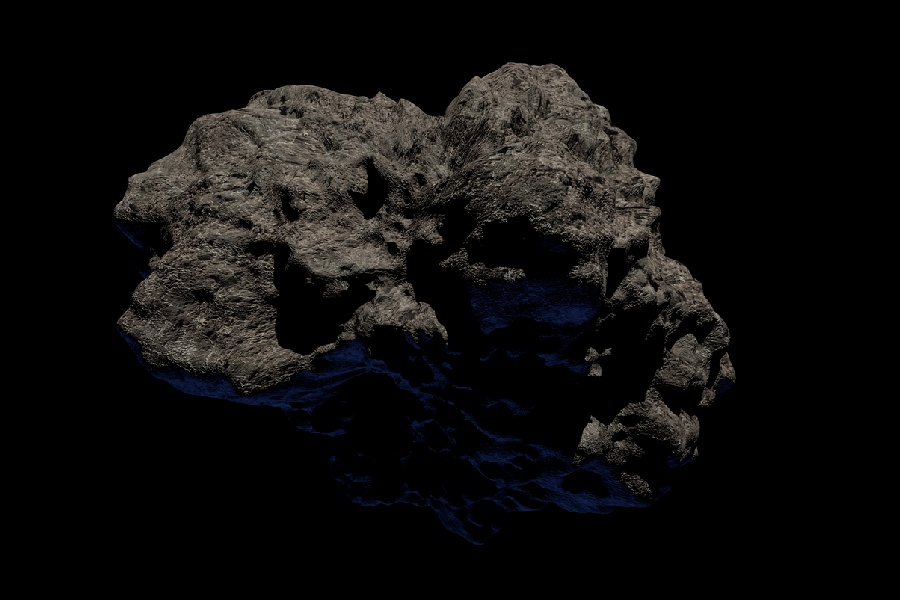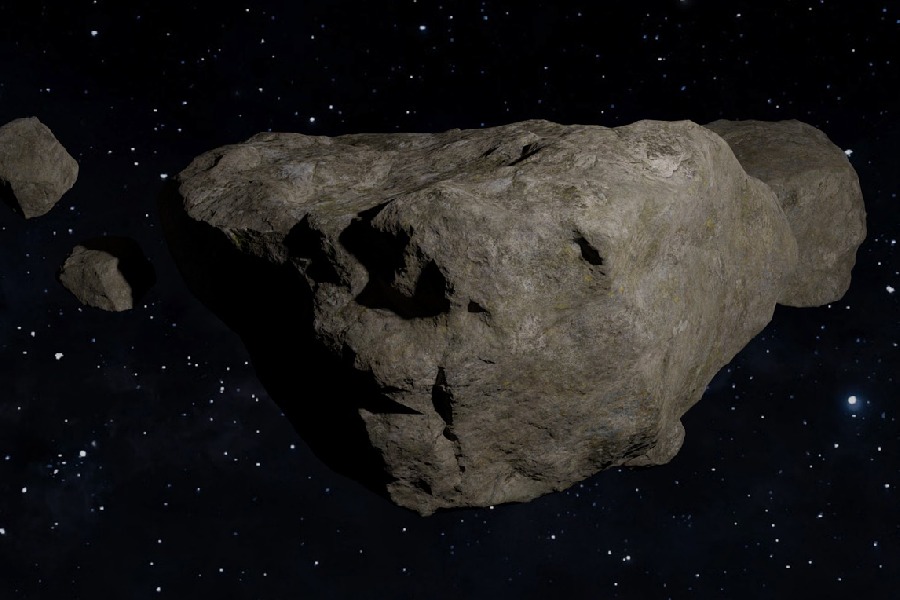Ever wondered what does an asteroid look like in the sky? When gazing up at the clear, starry sky, one mostly notices the bright specks of starlight and perhaps the moon casting its silvery glow overhead. But billions of much smaller celestial objects also quietly occupy interplanetary space within our solar system, including asteroids. But what are asteroids?
Commonly called asteroids, these rocky bodies hold mysteries scientists still seek to uncover as well as history from the time when planets formed around our young sun.
In this article we’ll explore all about asteroids, these intriguing denizens of our solar system’s depths. As we dive deeper into the key characteristics of asteroids, we’ll cover how scientists classify and study them, discuss notable examples in-depth as well as learn about the threat and promise these remnants of early solar system origins present in coming years.
What Are Asteroids?
So, what is the definition of asteroids? Asteroids are small, rocky objects that orbit the Sun, primarily found in the asteroid belt between Mars and Jupiter. They vary in size from small boulders to objects several hundred kilometers in diameter. This shows how big are asteroids and their diversity.
Asteroids are remnants from the early solar system, and their composition can include rock, metal, and sometimes ice. They lack atmospheres and have irregular shapes.
While many asteroids reside in the asteroid belt, they can also be found throughout the solar system, and occasionally their orbits bring them close to Earth.
The study of asteroids provides valuable insights into the formation and evolution of our solar system, and their potential impact on Earth is a subject of scientific interest and planetary defense efforts.

Origin, Formation, and Neighborhood of Asteroids
Remnants of the solar system
Where do asteroids come from? Are asteroids part of the solar system? Asteroids are remnants left over from the early days of the solar system over 4.5 billion years ago. Early on, gas and dust circled the young Sun eventually accreting into protoplanets.
But the gravity of newly-formed Jupiter interrupted this process, causing collisions that broke objects apart before they fully formed into a planet. The remaining rocky debris now orbits as asteroids.
This means most asteroids are pieces of protoplanets, worlds that never quite matured. Their compositions reflect ingredients that helped build the terrestrial planets so studying them provides insights into planetary formation processes.
Diversity in composition
Studies reveal asteroids display diversity in their makeup. The majority contain rock-forming minerals like olivine and pyroxene. Some are solid metallic masses rich in iron and nickel. Others contain substantial ice and organics, more akin to comets.
These variations showcase the range of materials available in the early solar system. Asteroid spectra studies classify them into types – C-type, S-type, M-type for example.
Understanding what do asteroids look like and differences in their comet-like, stony, or metallic nature gives clues to conditions across the evolving protoplanetary disk when our solar system coalesced from interstellar gas and grains.
Asteroid belt
The asteroid belt is a donut-shaped region orbiting the Sun between Mars and Jupiter, located roughly between 2 and 4 AU from the Sun. This circumstellar disk harbors millions of asteroids in a range of sizes from the dwarf planet Ceres at 590 miles (950 kilometers) wide down to space rocks just tens of meters across.
Though portrayals show a dense field of asteroids, they actually have significant distances between one another spanning millions of miles across the belt’s thick disk. This allows spacecraft to safely transit through this region of leftover relics from our solar system’s genesis.
Types of Asteroids
C-type asteroids
C-type asteroids tend to be very dark with low albedo surfaces. Their spectra indicate the presence of carbonaceous chondritic material containing volatiles, organics, and hydrated minerals.
This primitive composition means they have changed little over billions of years, providing a glimpse into early solar system ingredients. C-types comprise 75% of known asteroids.
S-type asteroids
S-type asteroids constitute about 17% of the observed population. Their brighter, more reflective surfaces point to silicates and metals in their makeup. This includes iron-bearing olivine and pyroxene as well as metals like nickel, iron and magnesium. S-type asteroids dominate the inner main belt.
M-type asteroids
M-type asteroids have very prominent metal signatures detected across ultraviolet, visible and infrared wavelengths studied. Their spectra show deep absorption bands indicating high abundances of nickel-iron metals.
This suggests they originated from planetary core material exposed during past break-up events. M-types account for most of the remaining fraction of asteroids.

Materials Found on Asteroids
Studies show asteroids contain a range of materials like silicates, metals, organics, and ices. These ingredients provide information on conditions across the protoplanetary disk 4.5 billion years ago. Metals imply thermal processing close to the Sun while icy objects formed farther out where volatiles could condense.
The natural resources on asteroids have space exploration and commercial potential. Metals like iron, nickel, platinum, and gold may supply future space construction projects. Water ice could provide rocket fuel for astronauts and may become essential waypoints enabling deep space travel.
Location and Number of Asteroids in Space
While many asteroids occupy the main asteroid belt between Mars and Jupiter, populations also exist elsewhere.
The Trojan asteroids share Jupiter’s orbit while near-Earth objects (NEOs) pass close to our planet. Models suggest collisions early on sent asteroids scattering widely, seeding the inner planets and outer solar system alike.
Current statistics catalog over 1 million known asteroids with tens of thousands more discovered annually as surveys improve. Yet this represents only a tiny fraction of asteroids estimated to exist, prompting an ongoing quest to characterize this primordial debris from our system’s early history.
The Main Asteroid Belt
A cosmic highway
The main asteroid belt contains millions of stony, metallic, and carbonaceous objects influencing solar system dynamics in unique ways. Ceres and Vesta are massive enough to be spherical mini-planets. Meanwhile, asteroid families share similar orbits and properties from ancient collisions.
Diversity within the belt
The main belt exhibits wider variety than all asteroids combined with different colors, chemical signatures, and densities observed across distinct subgroups. Understanding the belt’s extensive mixing reveals more about our solar system’s earliest chapter as planets emerged from the swirling disk around the young Sun.
Number of Known Asteroids
As of early 2023, over 1.1 million asteroids have been identified with more added with each new sky survey. Only about 30,000 have names while just a fraction have been closely studied. But statistical analyses applied to collective data reveal insights on asteroid origins.
Innovations enabling the acceleration in known asteroids include automated sky surveys like Pan-STARRS and specialized missions like OSIRIS-REx sampling Bennu. As technology progresses, our census of local space rocks climbs dramatically, underscoring gaps still left to fill.
Near-Earth Objects (NEOs)
NEOs describe asteroids and comets passing near Earth’s orbit. They approach within 30 million miles of our planet and orbit the Sun. While most pose no threat, some NEOs have erratic paths influenced by planetary gravity. Monitoring them helps evaluate potential risk.
Only about 40% of estimated hazardous NEOs over 460 feet across are currently known. Investment continues into detection and tracking efforts to determine probabilities of impact.
If a serious future threat emerges, mitigation may involve spacecraft gravitationally nudging the object slowly over time well before its projected impact date.
Conclusion
As we have learned, asteroids are remnants from our early solar system, each one a clue offering insights into planetary origins over 4 billion years ago. We hope this outline has conveyed that asteroids constitute building blocks that never quite coalesced into full-fledged planets.
Asteroids vary greatly in their makeup and number in the millions across our solar system. Even though pop culture depicts them as hazards in space, asteroids actually have important stories to tell. Their craters and icy materials reveal details about the cloud of gas and dust that formed into the planets and other objects in our solar system home.
Analysis of asteroids trajectories, families, densities and interior structures continue to unveil knowledge that brings us closer to a complete picture of how cosmic materials are organized into this unique neighborhood of worlds.
With this in-depth exploration of what are asteroids, you have gained insight into the true nature and behavior of these space rocks as time capsules from our solar system’s origins.
